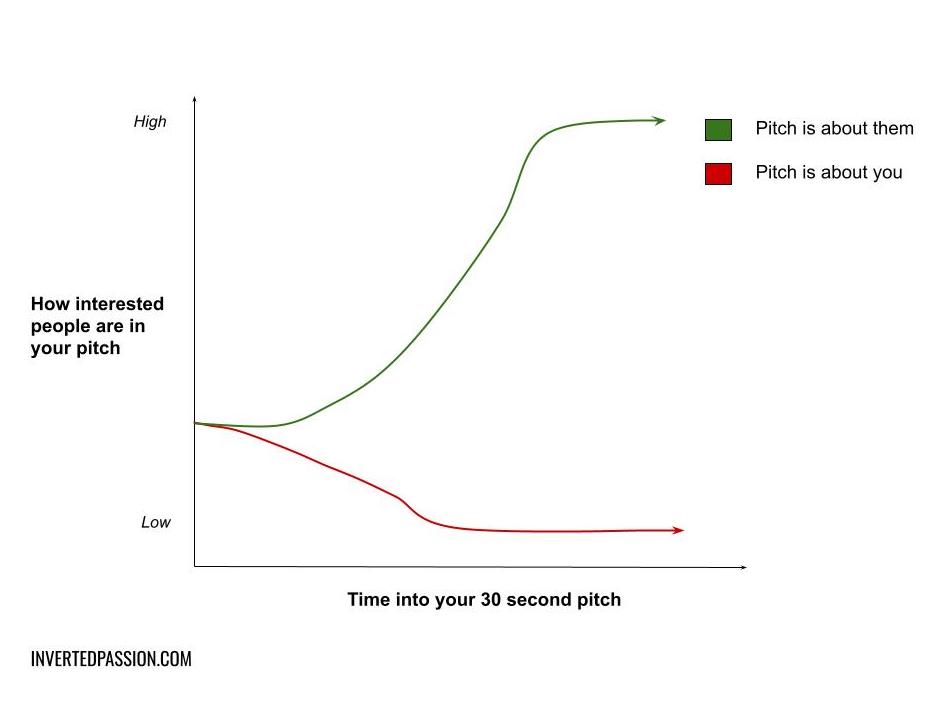Entrepreneurs generally confuse their 30 second pitch as something that needs to be about what they’re doing. This interpretation is understandable because usually anyone they meet ends up asking them what they do and the entrepreneur faithfully launches into her pitch.
Unfortunately, such a pitch often ends up with the listener quickly losing interest.

This is because even though people ask what you do with good intentions, they usually do not actually deeply care about what you do. What people care about is themselves, which suggests that a pitch should start and end with them and revolve around the world they live in.
In short, your pitch should start with talking about the audience’s aspirations and goals and only then talk about how your startup helps fulfill those aspirations. For example, instead of talking about how many features you have in your CRM product, your pitch should be about how salespeople lose four hours a day updating customer information which comes at a loss of $50k per salesperson per year and how your product helps salespeople recover those four hours every day.
A fantastic example of such a pitch is by Elon Musk when he was unveiling Tesla’s battery product Powerwall. The video is on Youtube, and you should watch it. As you watch it, notice how Elon starts his talk by highlighting why the audience should care about what he’s going to say. For doing that, he points out greenhouse gas pollution and climate change – two drastic challenges that impact everyone in the audience (and their families). After grabbing their attention by telling them precisely what’s wrong with the world, he goes on to show the possibility of a world where these two challenges have been solved via batteries. Only after he has the audience’s interest firmly established, does he start talking about their battery product and how it can help the audience transition into a better world.
Andy Raskin has a fantastic write-up on common elements of great pitches (Google: “greatest pitch ever andy raskin”). Even though the content in great pitches is obviously different for different pitches, all of them follow a similar structure of highlighting the audience’s existing pain first, then showing a possibility of a better world, then highlighting the barriers to that better world, and finally introducing the product features as things that will help overcome such barriers.
This perspective shift from what you’re doing to why should the listener care doesn’t just help you in making a great pitch; it also helps your startup become more customer and market-oriented and less feature-oriented. And this orientation ultimately helps all aspects of the business.
Here’s a fun exercise you can try. For your startup, try making a version of the pitch where your product is mentioned only at the very end of it and almost in passing. The bulk of your pitch should be about the listener and her goals. If the listener is not your target user (e.g. it’s for hiring or raising funds), you obviously can’t use the same pitch. The pitch has to be customized to each listener type. Your potential customers should hear a different 30-second pitch than your potential investors who should hear a different pitch than the people you’re trying to hire.
Remember: never make your pitch about yourself. it has to be about the one getting pitched and her goals.
This essay is part of my book on mental models for startup founders.
Join 200k followers
Follow @paraschopra